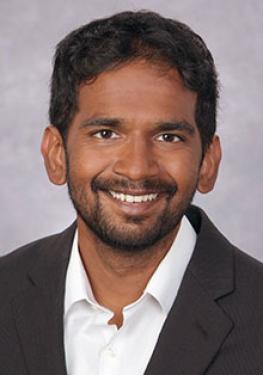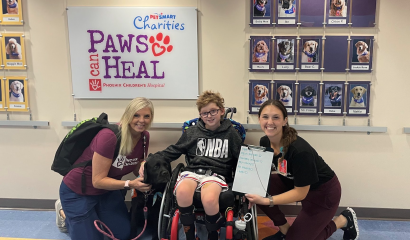Bright Futures
Articles and Updates from Phoenix Children's
After a child experiences an acute brain injury, parents are often in a state of shock. This isn’t something we wish on anyone; let alone the kids we hope to protect and foster toward a healthy life. These events can include traumatic brain injury, hypoxic ischemic brain injury after cardiac arrest or perinatal complications, strokes, or brain infections.
As children with these injuries enter the recovery phase, several of them will end up with a diagnosis they did not have before: epilepsy. Epilepsy is a condition which represents having a risk of unprovoked seizures. This means that they are no longer critically ill but after they have recovered from their injury, they have developed a newfound risk of seizures that can occur at any time during their regular life. Seizures, and the fear of having them, can be a scary experience, leaving families feeling overwhelmed and concerned about how they can help their children with this new diagnosis.
Stopping Seizures
The goal of Epilepsy Program at the Barrow Neurological Institute at Phoenix Children’s Hospital is to improve the quality of life with children living with epilepsy. Because seizures can impact a child’s development and ability to live an active lifestyle on a day-to-day basis, treatment aimed at stopping seizures becomes paramount. Often, the initial approach to treating seizures is with antiseizure medications. We tailor our use of these medications based on the type of seizures our patients experience, as well as how their potential side effects may impact the life of the children we treat. Many times, children with acquired epilepsy from brain injuries have seizures which remain resistant to medications. When this occurs, additional strategies such as neuromodulation or ketogenic diet therapy can be employed. When the seizures appear to be coming from a specific location, acquired epilepsy can many times be cured through respective epilepsy surgery.
The Barrow Neurological Institute at Phoenix Children’s Hospital is uniquely suited to tackle the challenge of acquired pediatric epilepsy. Two distinct programs, the Neurocritical Care Program and the Epilepsy Program, allow for a transition of care for those children with acute brain injuries who go on to develop epilepsy. The Neurocritical Care Program focuses on the treatment of brain-injured children in the critical care units, aiming toward preventing worsening brain injury in such patients. Our team uses state of the art technologies including continuous electroencephalography and high-resolution magnetic resonance imaging to understand the nature of a child’s brain injury and address seizures that might arise in the immediate aftermath of their injury. These patients continued to be followed by physicians toward their recovery phase and into the outpatient clinic setting. For those patients who develop acquired epilepsy, they are introduced to our Epilepsy Program. Within this program, a team of expert epilepsy specialists are empowered to review electroencephalographic and neuroimaging findings from the initial injury to the outpatient setting. This helps the team gain a comprehensive understanding of the nature of the patient’s acquired epileptogenesis. This understanding helps our team tailor strategies to manage each child’s epilepsy and streamline the process to initiating the key diagnostic modalities and treatment techniques to stop or reduce seizures and improve a child’s quality of life.
Emerging Research and the Future of Acquired Epilepsy
While antiseizure medications and neuromodulating strategies like ketogenic diet or vagal nerve stimulation may help reduce or prevent seizures, they do not cure a patient of acquired epilepsy. For this reason, disease-modifying therapies to cure epilepsy are desperately needed. Our program offers respective epilepsy surgery for those patients who will benefit, and our epilepsy team utilizes a comprehensive set of diagnostic modalities to assess a patient’s candidacy for such surgery. Nevertheless, many patients may not be good candidates for respective epilepsy surgery and other disease-modifying strategies against epilepsy are needed for them. An array of candidate disease-modifying medications are emerging for prevention of acquired epilepsy, but these therapies are not yet ready for clinical use, and more research is needed to identify the risk factors that place a patient at risk for acquired epilepsy.
At Phoenix Children’s Hospital, we have been funded by the United States Department of Defense Epilepsy Research Program to investigate biomarkers from electroencephalography, multimodality neurologic monitoring, and neuroimaging to identify those features that are predictive of developing epilepsy after traumatic brain injury. This work is ongoing, and we hope that our findings will help facilitate the efficiency of future clinical trials aimed at testing therapies that can prevent epilepsy after such injuries. As a multidisciplinary program, we aim to optimize the care of epilepsy patients we treat in the here and now, as well as think toward the future of ways to cure or prevent acquired epilepsy.



